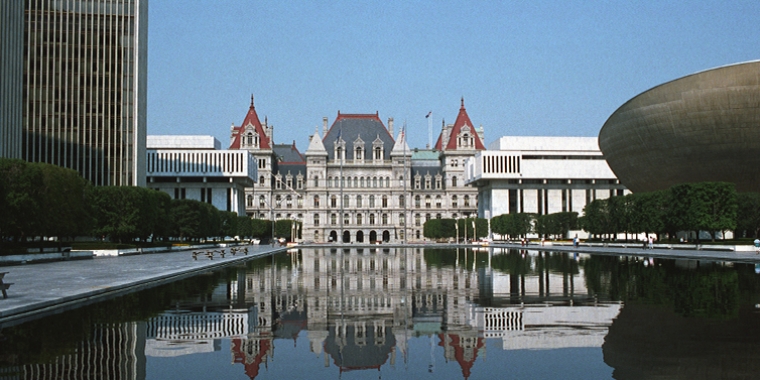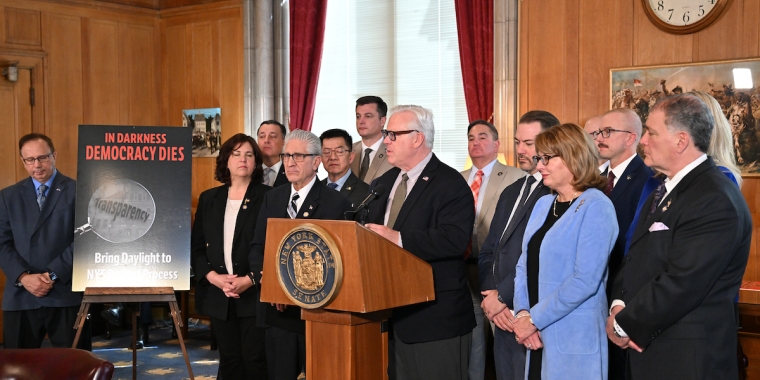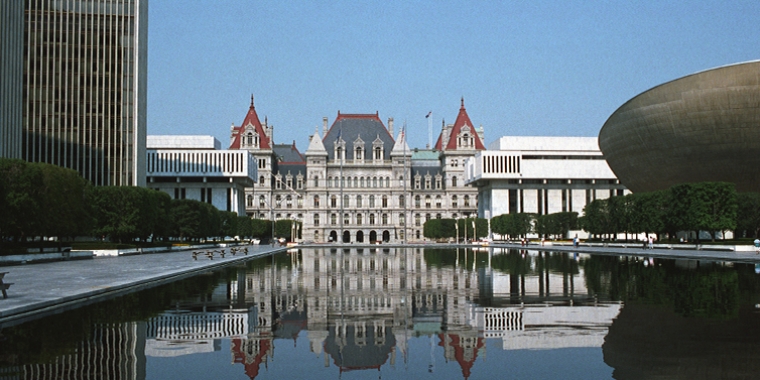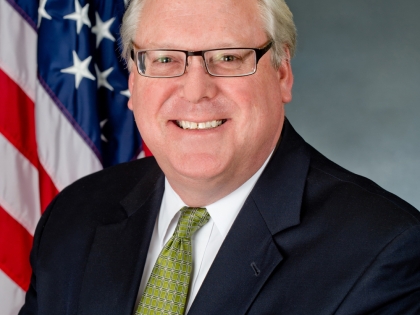
O'Mara on budget highs (and lows): Important tax cuts and beginning of 'Young Farmers NY' strategy, but falling short on mandate relief and saving Monterey
Thomas F. O'Mara
March 31, 2014
-
ISSUE:
- Budget
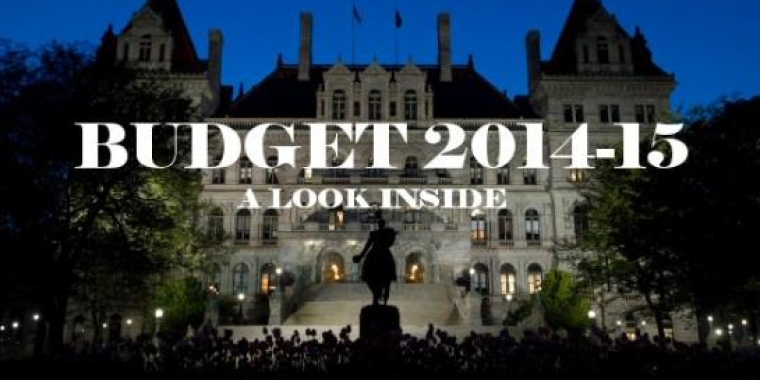
Albany, N.Y., March 31—State Senator Tom O’Mara (R-C, Big Flats) said today that highlights of the final 2014-15 New York State budget include key tax cuts for upstate manufacturers and keeping state spending growth under two percent for the fourth consecutive year.
O’Mara also praised the budget for including key provisions of a “Young Farmers NY” strategy he co-sponsors in the Senate that was unveiled earlier this year.
He was joined by area Assemblymen Phil Palmesano (R,C,I-Corning) and Chris Friend (R-Big Flats) in remaining critical of the Cuomo administration's decision to close the Monterey Shock Incarceration Correctional Facility in Schuyler County [SEE SEPARATE RELEASE].
Over the past two years, O’Mara has singled out tax relief for upstate manufacturers as a top state priority.
“This budget includes important tax cuts that will start to make a difference for an upstate manufacturing sector that remains at risk from high taxes and overregulation,” said O’Mara, pointing to the latest figures from the state Labor Department showing, for example, that total manufacturing employment in the Elmira region is at its lowest level since 1990. “This budget includes steps toward a business climate that invites private-sector job growth, welcomes manufacturers and other industries, and keeps moving toward the goal of long-term economic security for workers and their families.”
The upstate advocacy organization Unshackle Upstate also singled out the importance of the manufacturing tax relief and other tax cuts in this year’s budget.
Unshackle Upstate Executive Director Brian Sampson said, “This budget agreement takes meaningful steps toward making New York more affordable for both businesses and taxpayers. The reduction in the 18A energy tax, lowering the corporate tax rate and a real property tax refund for manufacturers have long been advocated for by Unshackle Upstate and are all necessary measures to improve New York’s economy. We are also pleased to see the Estate Tax reformed and aligned with federal standards to help individuals, small businesses and family farms stay in New York."
The final $142-billion state budget for 2014-15 includes the following areas of tax relief that O’Mara has been pushing:
-- elimination of the corporate tax on manufacturers across the Southern Tier and Finger Lakes regions, and statewide;
-- a 20-percent real property tax credit for manufacturers; and
-- the accelerated elimination of the higher 18-a utility surcharge first imposed on New Yorkers in 2009, a state-imposed cost that hits farmers, manufacturers and senior citizens facing high energy expenses especially hard. The new budget will eliminate the higher assessment over the next three years and save ratepayers $600 million;
-- a key provision of the Senate’s “Young Farmers NY” plan to encourage younger men and women who want to pursue careers in farming. The new budget includes critical estate tax reform. Farming is a land and capital intensive business, and the value of even an average-sized farm can easily exceed New York’s current $1 million estate tax threshold. That makes it more difficult to keep generations-old farms in the family and forces many farmers to make the difficult choice of subdividing or selling off farmland in order to pay tax bills. This year’s budget will increase the estate tax threshold from $1 million to $5.25 million – a move that’s long been a priority of the state Farm Bureau and other farming advocates, as well as O’Mara and many other state legislators representing heavily agricultural districts.
This year’s budget also includes other key planks of the Senate’s “Young Farmers NY” strategy [SEE SEPARATE RELEASE].
[watch budget-related comments on the floor of the Senate today HERE, and HERE]
The state’s new fiscal plan also includes $1.5 billion in direct property tax relief over the next three years to property taxpayers in municipalities that reduce costs and increase efficiencies, or have already implemented cost reduction plans at the local level.
Despite some positive news on the tax front, however, O’Mara remained highly critical of the state’s ongoing failure to provide localities with meaningful relief from unfunded state mandates. He continued to stress the ongoing need for New York to provide mandate relief to local governments and school districts in the face of the two-percent property tax cap the state enacted in 2011. The state has taken some important mandate relief actions over the past several years, he said, including long-term pension reform and the takeover of the growth in local Medicaid costs, but it hasn’t been enough to truly transform the state-local partnership.
“Governor Cuomo might not want to hear it, but many of us plan to keep arguing that the most effective way for the state to get our local property taxpayers out from under America’s heaviest tax burden is through mandate relief,” said O’Mara. “The state enacted the local property tax cap with a promise to localities and school districts to roll back the heavy burden of unfunded state mandates. Some meaningful steps have been taken to rein in the cost of Medicaid, for example, but we can’t keep turning our backs on the fact that more needs to be done. Localities and school districts facing tough fiscal challenges still have their hands tied by too many unfunded state mandates.”
According to O’Mara, other highlights of the final budget include:
-- an overall increase of approximately $1.1 billion in state aid to public schools, including, largely at the insistence of Senate Republicans, a $602-million reduction of the Gap Elimination Adjustment (GEA), approximately $60 million more in GEA relief over last year.
“The elimination of the unfair and detrimental Gap Elimination Adjustment remains a top priority for our local school districts. It’s a priority I share and will continue to work toward eliminating completely,” said O’Mara;
-- a rejection of any state funding for a college-for-inmates proposal Cuomo floated earlier this year that drew strong opposition from O’Mara and many other upstate legislators, as well as no funding to expand college tuition assistance for illegal aliens through the so-called “Dream Act”;
-- the use of Common Core-based test scores for students in grades 3 through 8 will be delayed for two years;
-- an expansion of the number of senior citizens eligible for the EPIC prescription drug program by increasing the income eligibility limits from $35,000 to $75,000 for individuals and from $50,000 to $100,000 for married enrollees. The budget also includes a $5 million increase in funding for community services for the elderly, such as transportation assistance, respite care, and home delivery meals;
-- maintaining funding for local roads and bridges through the Consolidated Highway Improvement Program (CHIPS) at last year’s increased funding level of $438.1 million and provide additional funding of $40 million to local governments to fix surface road damage and the large number of potholes in the aftermath of this year’s extreme winter;
-- increasing community college base aid by $75 for each full-time equivalent student, which represents a total increase of $15.1 million for SUNY and CUNY community colleges..
Overall, O’Mara said the new budget continues key priorities necessary to exert long-term control over future state spending, including, also for the fourth straight year, keeping a lid on year-to-year state spending growth, keeping it under two-percent again this year.
Share this Article or Press Release
Newsroom
Go to Newsroom